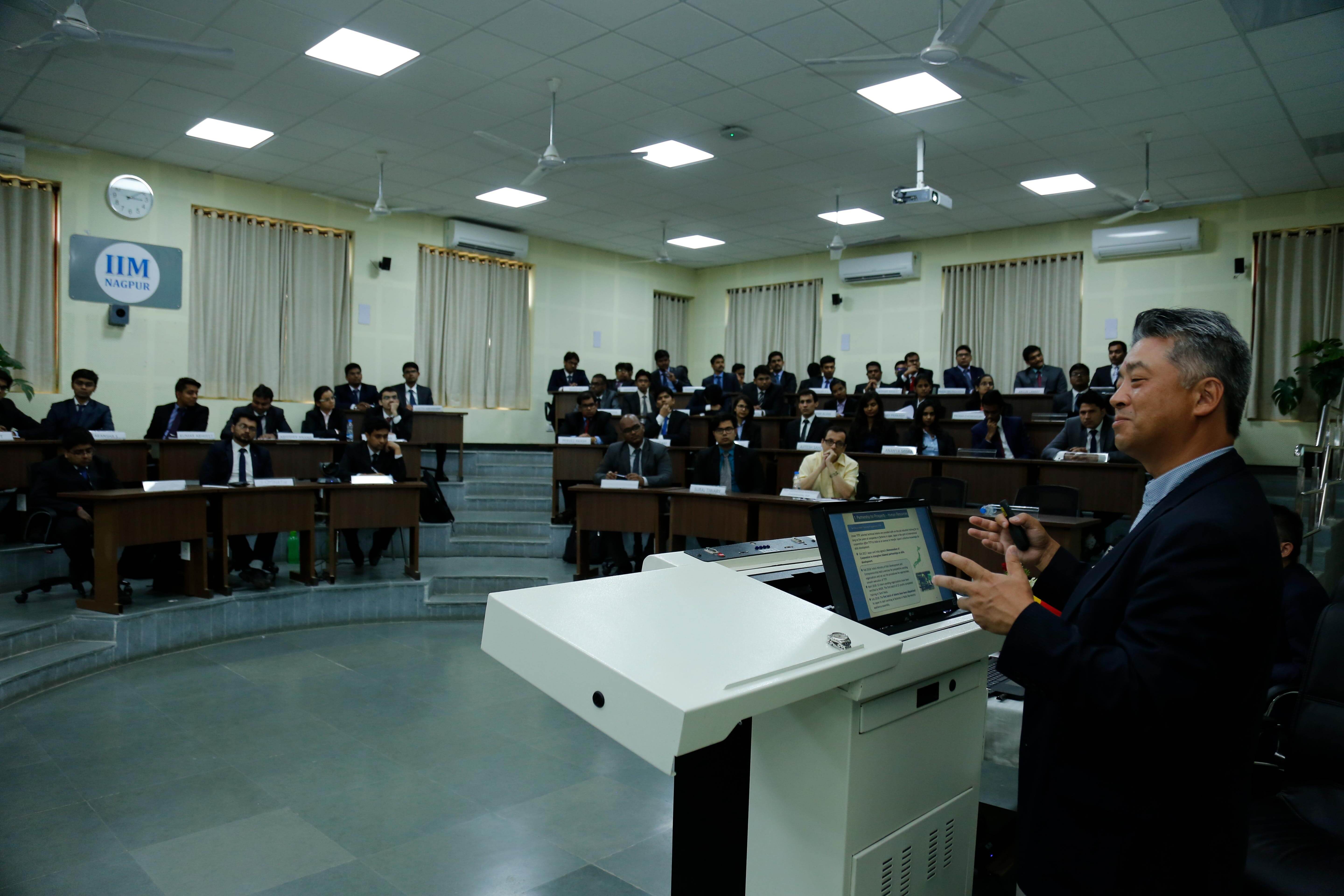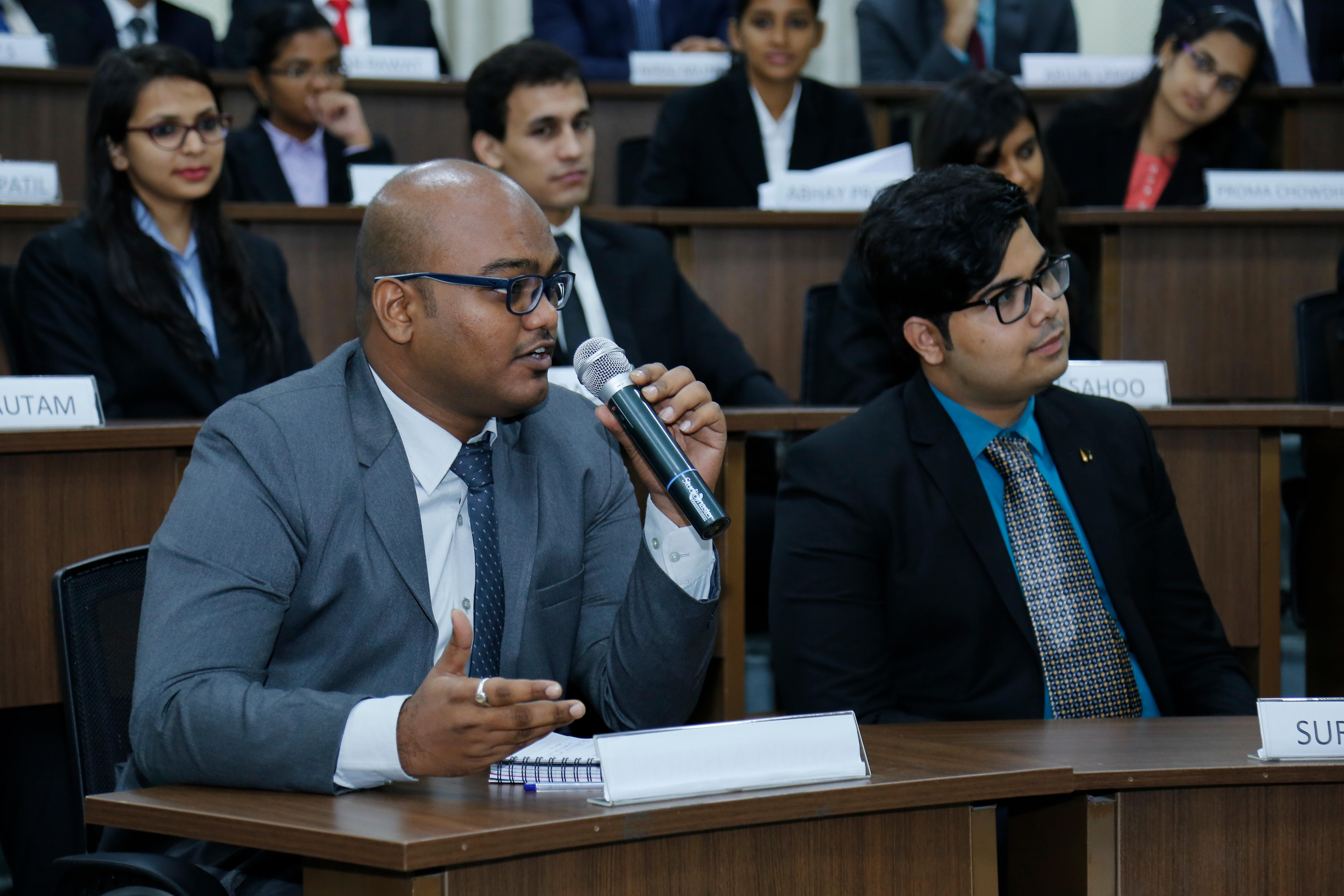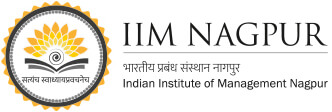
With a view to promote the co-operation between India and Japan, Mr. Kenko Sone, Minister (Economic & Development) at the Embassy of Japan in India, and Mr. Masahiro Kobayashi, First Secretary (Education) at the Embassy of Japan in India, visited Indian Institute of Management Nagpur on July 30, 2018, Monday.
The focus of the event was to improve placements and increase the number of Indian students studying in Japan.
On the occasion, Prof Rahul Kumar Sett introduced the guests to the students. He welcomed the guests and appreciated their visit to IIM Nagpur to guide the students. He further mentioned that a group of 12 students from the second year of PGP 2017-19 will be visiting Japan soon under international immersion programme.
 While addressing the students, Mr. Kenko Sone, Minister (Economic & Development) at the Embassy of Japan in India, talked about ‘Elevation of the Partnership to the Next Level’ for the prosperity for Japan and India.
While addressing the students, Mr. Kenko Sone, Minister (Economic & Development) at the Embassy of Japan in India, talked about ‘Elevation of the Partnership to the Next Level’ for the prosperity for Japan and India.
In his presentation, Mr. Sone stated that “Japanese companies considered India the 2nd most promising field of operation in the medium term (3-5 yrs) in the world as of 2017, while Japanese SMEs termed India as the 3rd most promising. Companies in Japan have consistently regarded India as the most promising field of operation in the long term (10 yrs) in the world since 2010.”
He further said that Japanese companies cite “future growth potential of the local market” as the biggest reason for regarding India as the most promising field of future operation. “Yet the Japanese companies have raised concerns about operating in India about its legal system, infrastructure and tax system,” Mr Sone mentioned.
He took pride in announcing that there are over 1,300 Japanese companies in India among which more than 500 companies are in Delhi-Gurgaon-Noida, more than 30 in Gujarat, more than 150 in Mumbai, more than 50 in Pune, more than 140 in Chennai, and close to 200 Japanese companies in Bengaluru.
“There has been major collaborations between the two countries. These include Japan-India Investment Promotion Partnership, Energy, JIMs and Manufacturing Skills Transfer Programme, Innovative Asia (scholarship for Indian students), Technical Intern Training Program (TITP), Disaster Risk Reduction, Japan serving as partner country in World Food India in 2017, Japan-India Startup Hub in Bengaluru , Aerospace (JAXA-ISRO Joint Working Group, Asia-Pacific Regional Space Agency Forum [APRSAF-24]), Health, MoU between IoT Acceleration Consortium (ITAC) between Japan’s Ministry of Information and India’s NASSCOM, 9th Japan-India Joint Committee on Science and Technology Cooperation in January 2017, among many others,” Mr. Sone mentioned.
Mr Sone also said that other potential areas for cooperation both the countries are working on are infrastructure development (road network connectivity, electricity, water supply, sewage), cultural interaction (people-to-people cultural exchange, Japanese language education, sports exchange, etc), and social and environmental sustainability (biodiversity, afforestation, community empowerment).
During the question-answer session, IIM Nagpur students showed keenness in knowing more about the business collaborations Japan is interested in. When asked what Japan has to offer for the startups in India, Mr Sone said that discussions in this regard are on and some concrete decisions may be taken soon.
One of the students asked India has strong economic bonds with Japan rather than China; why are the countries unable to materialise this? Mr Sone answered that Japan first spread its business to the countries close to it like Indonesia and Malaysia. Its next destination is India and this is the right time to work with India, he added.
Next was a presentation on ‘Cultural and Historical Bond – Linking Japan and India’ by Masahiro Kobayashi, First Secretary, Embassy of Japan in India.
He stated that it was in the 8th century when the first Indian came to Japan. “In 752, Bodhisena, the Brahman Buddhist High Priest, visited Japan to assume the role of “Master of Ceremony” for the Great Buddha eye-opening ceremony at the Todaiji Temple, Nara. There are many Japanese deities which have been incorporated from the Indian gods. Japan has hundreds of shrines dedicated to Goddess Saraswati, along with innumerable representations of Lakshmi, Indra, Brahma, Ganesha, Garuda, Kubera and others which are regularly worshipped in Japan,” Mr Kobayashi said.
Mr Kobayashi then threw light over the education system in Japan and opportunities for Indian students in Japan. He explained that there are major differences between what Japan calls gakko and what foreign countries call a school. “Unlike teachers in foreign countries who specialize in teaching class, Japanese teachers handle everything from teaching class subjects to student guidance and club activities. Japanese schools are the nucleus of their local communities and are important for energizing them. In Japan, gakko (schools) include all from intellectual education, moral education to physical education,” he said.
Mr Kobayashi further stated that Japan’s Prime Minister’s Philosophy is that the country cannot survive unless more brain and investment are brought in. “Prime Minister Abe has said that the non-Japanese students seeking globe-wide careers do not select universities in Japan. Universities in Japan should be more globalized,” Kobayashi added.
Mr Kobayashi apprised the students that through carrying out comprehensive university reform and internationalization, the Top Global University Project (2014-2023) aims to enhance the international compatibility and competitiveness of higher education in Japan. He said that Japan’s MEXT has selected 37 top global universities and has allocated 10-year long special budget for supporting their university reform towards the internationalization. 37 universities are categorized into two types – Top Type (13 universities, aiming to rank in the top 100 in the world), and Global Traction Type (24 universities, pioneering trial runs based on their performance)
“Until 2017, a number of Indian students studying in Japan was 1,236. There are various scholarships available for international students for studying in Japan. There are numerous merits of studying in Japan. The country is peaceful, safe and sanitary society, very low crime rate, many hospitals, restrooms, inexpensive university education, support system available for foreign students, well-developed transportation system, etc.,” Kobayashi added.
Kobayashi highlighted the Japan-India “Special Strategic and Global Partnership” which targets 3.5 trillion yen of public and private financing from Japan to India in 5 years. Also, India has taken the decision to introduce Japanese Shinkansen system for High-Speed Railway and an agreement has been signed for Cooperation in the Peaceful Uses of Nuclear Energy, while has also singed MoC for the promotion of Japanese Language Education in India.
The vote of thanks was proposed by Prof Deepargya Mukherjee and also appreciated the students for their thought-provoking questions and active participation in the session.
Gift of honor: On the occasion, the Japanese delegates , Mr. Kenko Sone, Minister (Economic & Development) at the Embassy of Japan in India, and Mr. Masahiro Kobayashi, First Secretary (Education) at the Embassy of Japan in India, were gifted with a painting by Subhash Babhulkar, noted painter from the Orange City. Also, IIM Nagpur felicitated Mr Babhulkar for his precious presence on the occasion.

